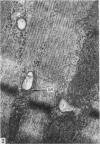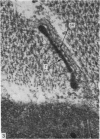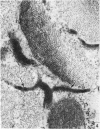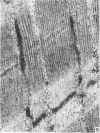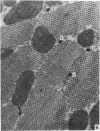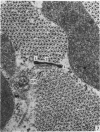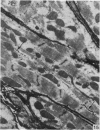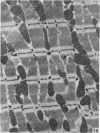Abstract
The T-tubule system in cardiac muscle cells has been investigated with the electron microscope in 10 adult rats after infiltration with horseradish peroxidase. All cardiac muscle cells possess a T-system, but its complexity varies according to the region of the heart. It is most extensive in the general ventricular myocardium where there are primary, secondary and tertiary transverse tubules as well as longitudinal elements, and there are numerous couplings between the T-system and the sarcoplasmic reticulum (SR). The T-system and associated SR couplings are less extensive in the atrium and in the atrioventricular conducting system. It is least well developed in the nodes, particularly in the sinuatrial node, where it is restricted to primary T-tubules. There are numerous SR couplings with the sarcolemma in all types of cardiac muscle cells. Where intercalated discs occur, SR couplings are associated with non-specialized parts of the disc. The possible significance of these ultrastructural features in regard to the speed of conduction by myocardial tissues, and in the excitation-contraction sequence is discussed.
Full text
PDF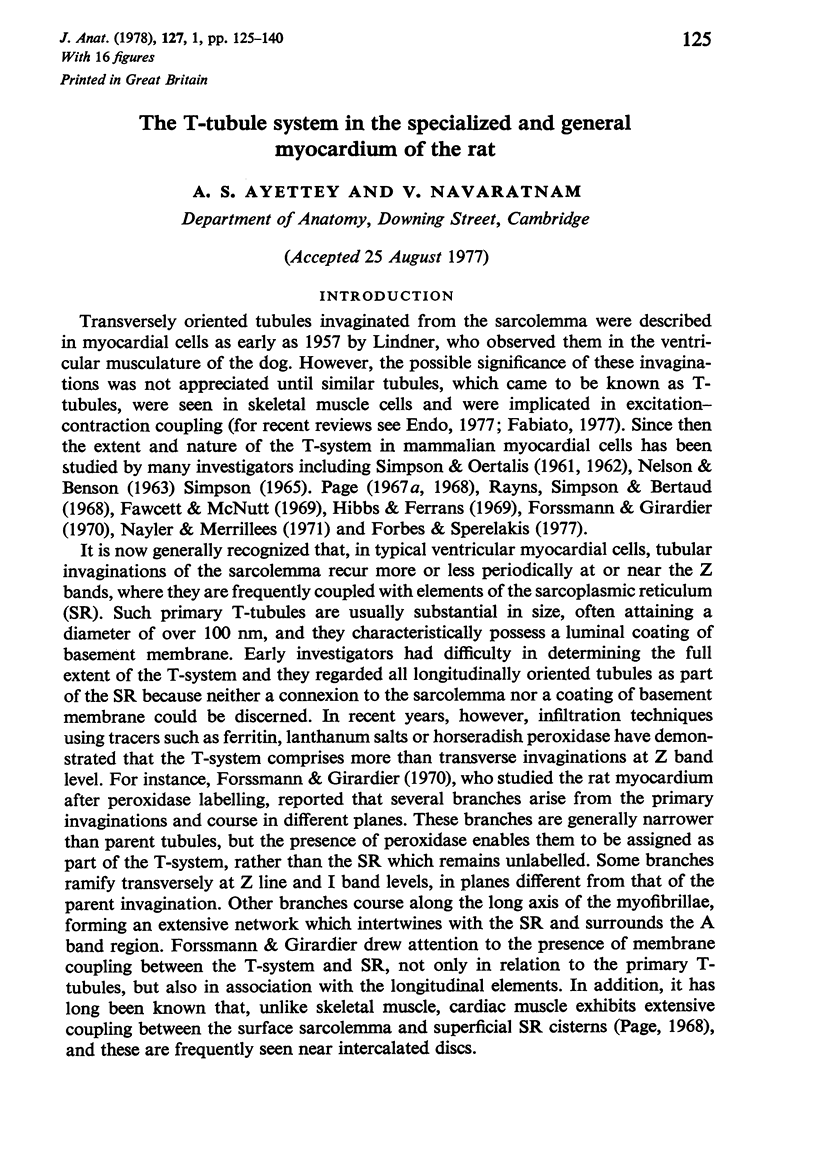
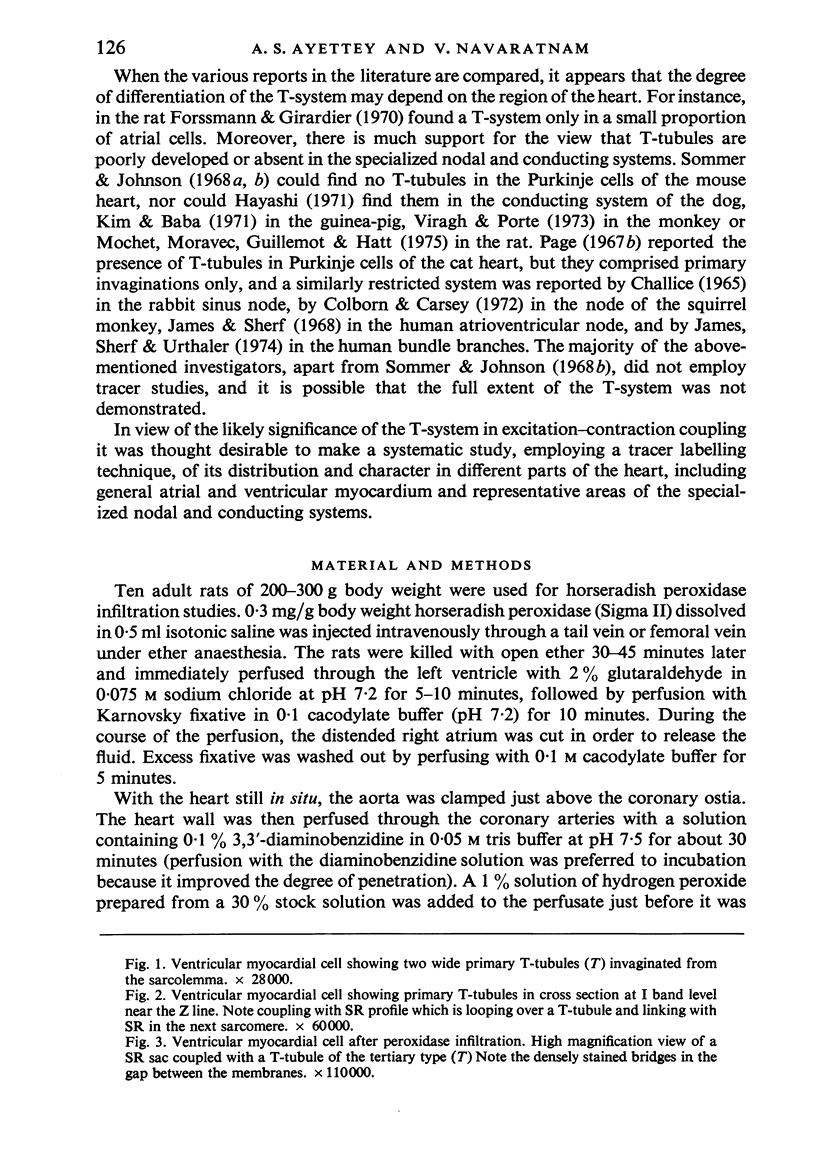
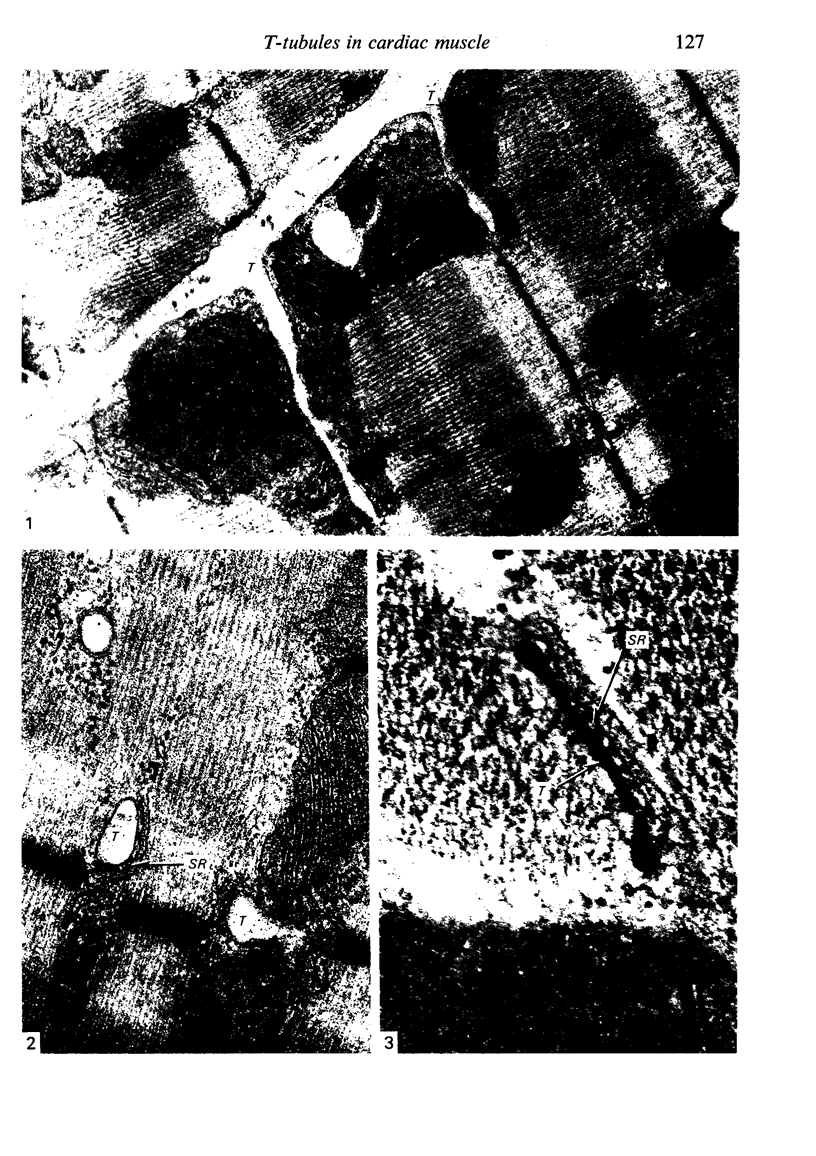
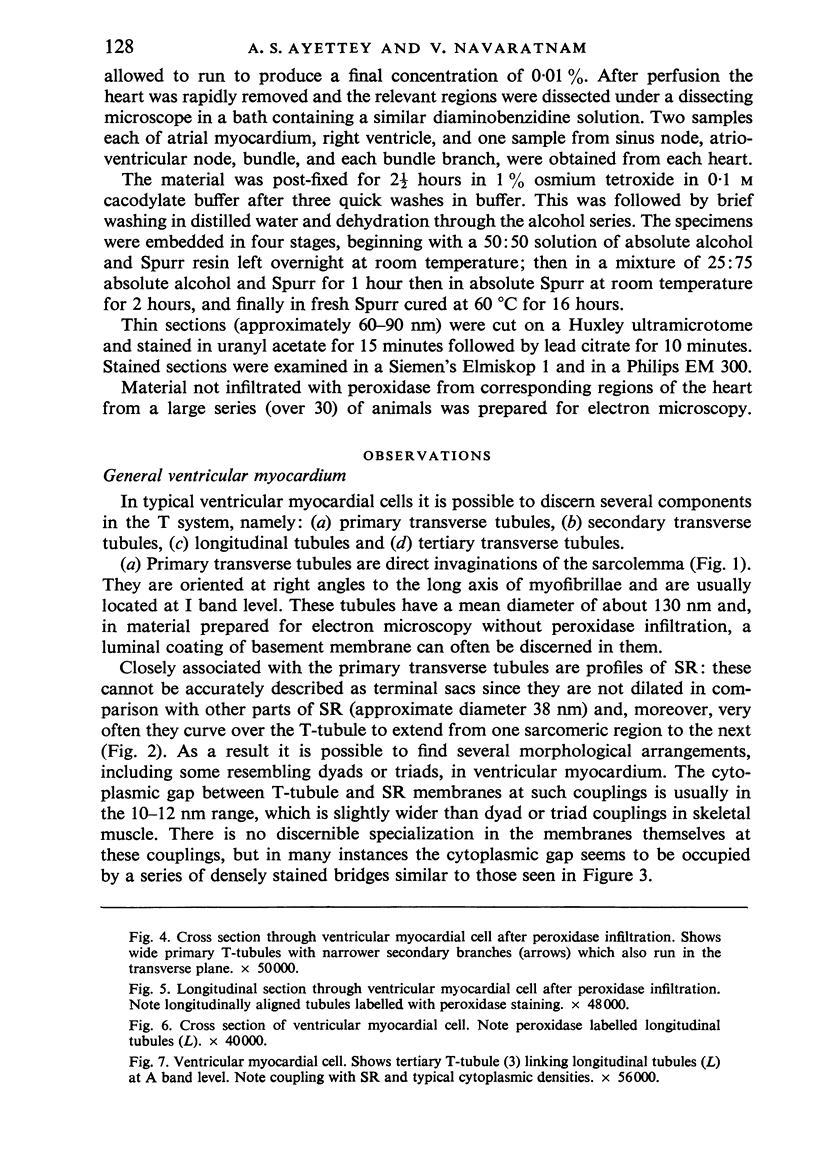
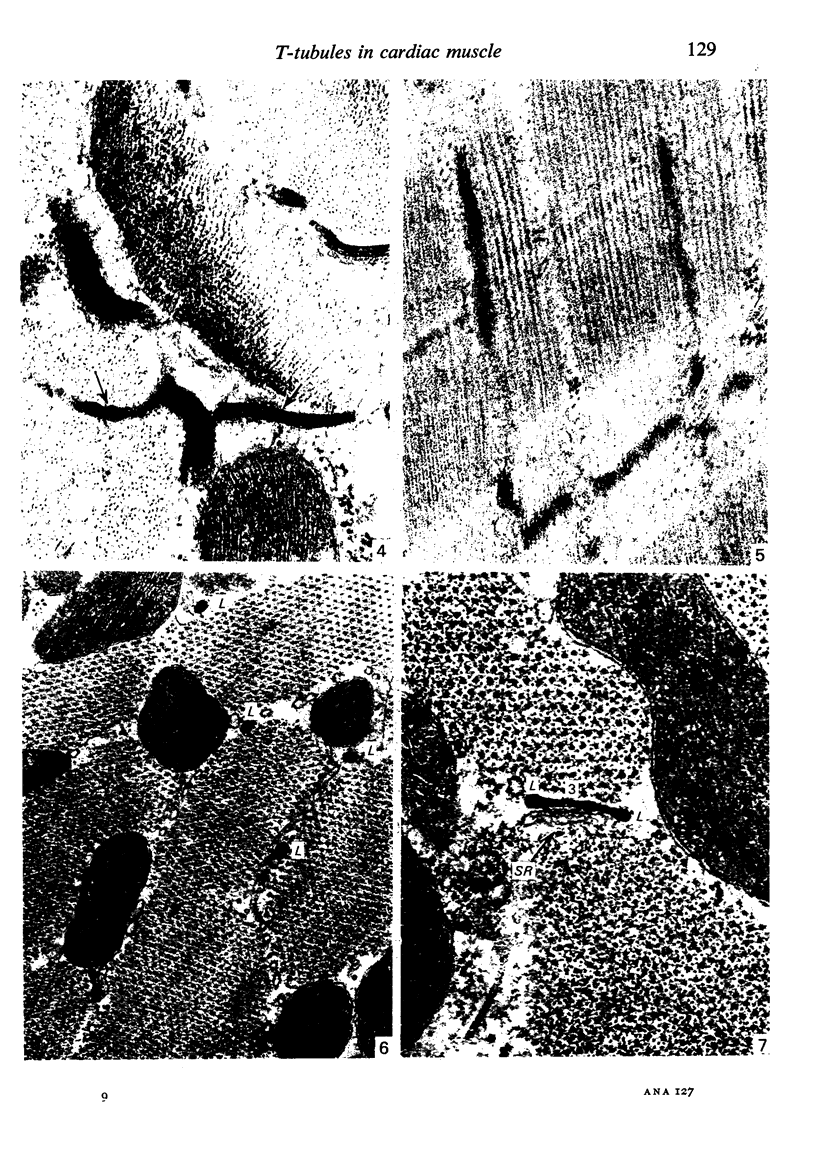
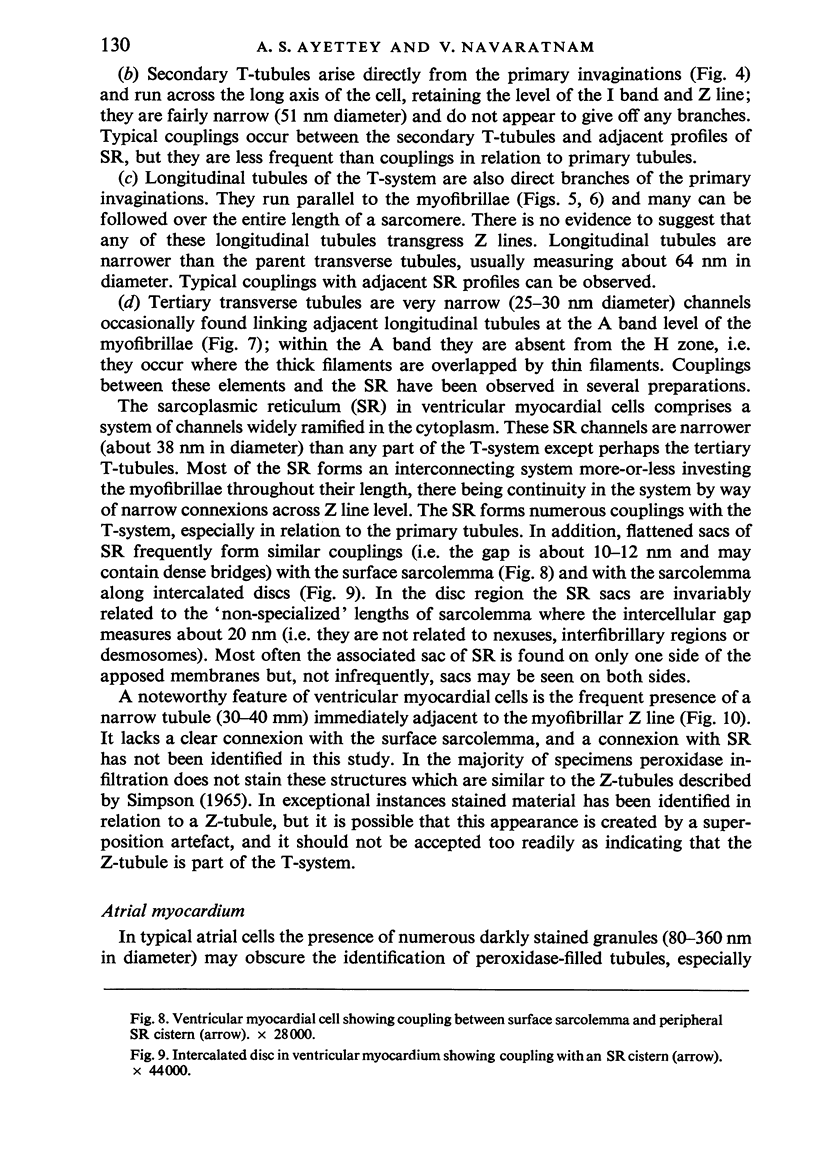
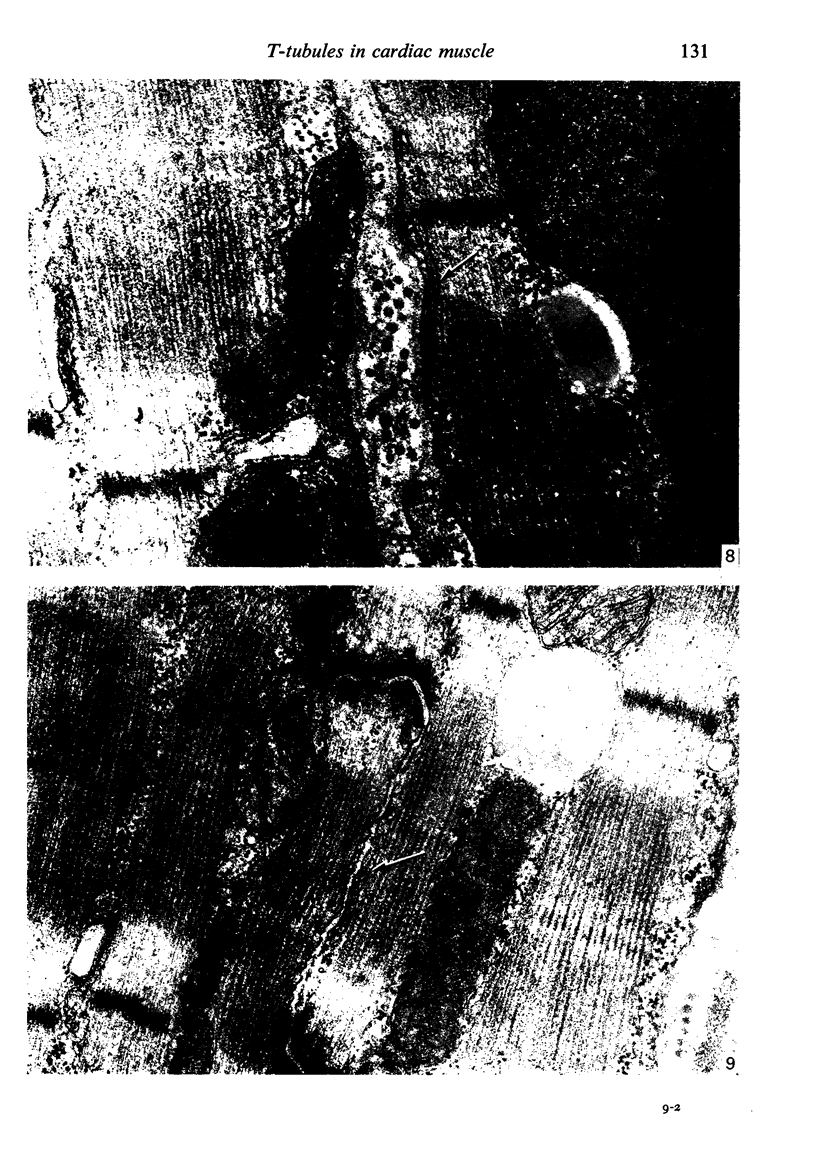
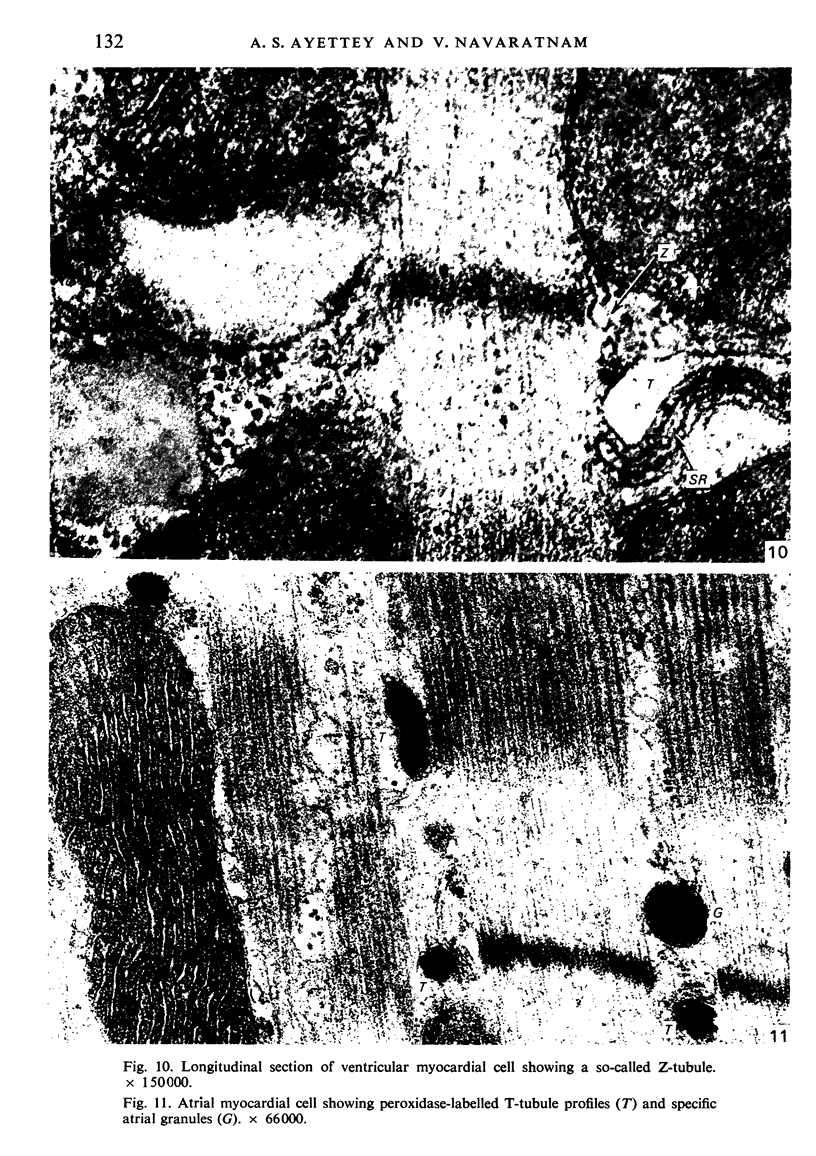
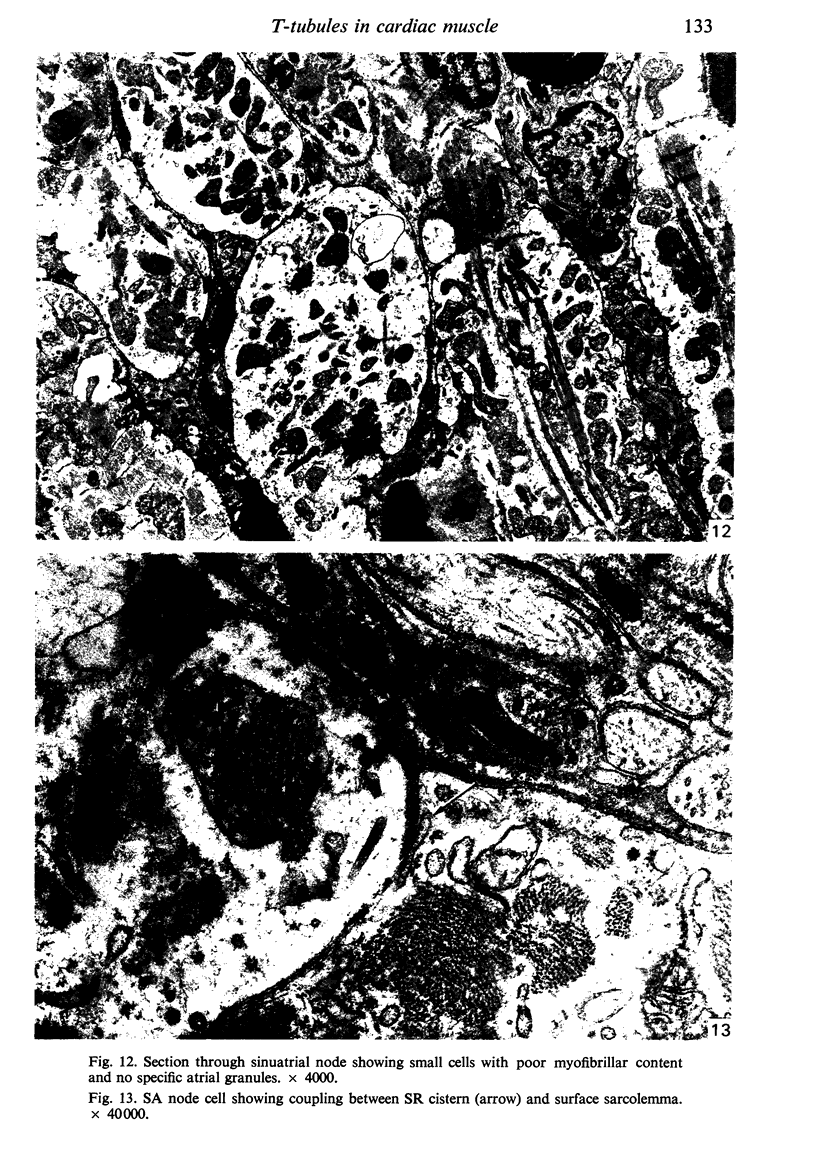
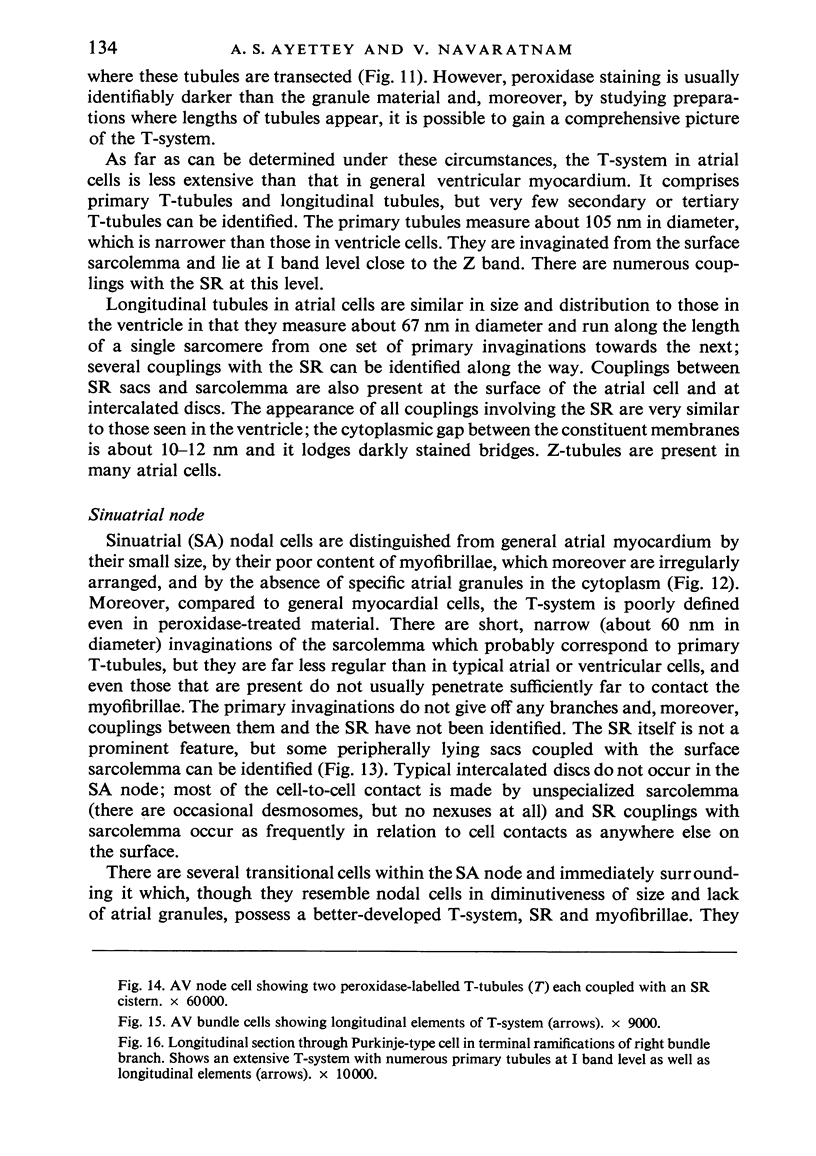
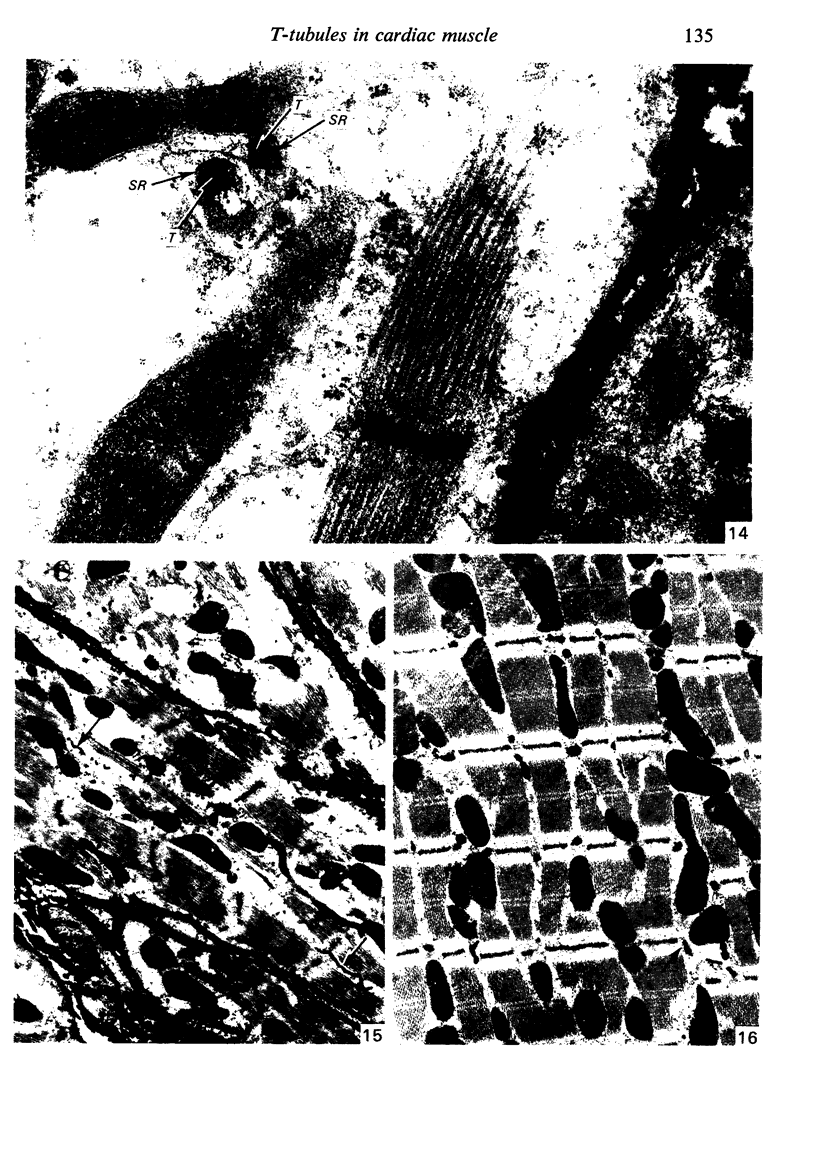
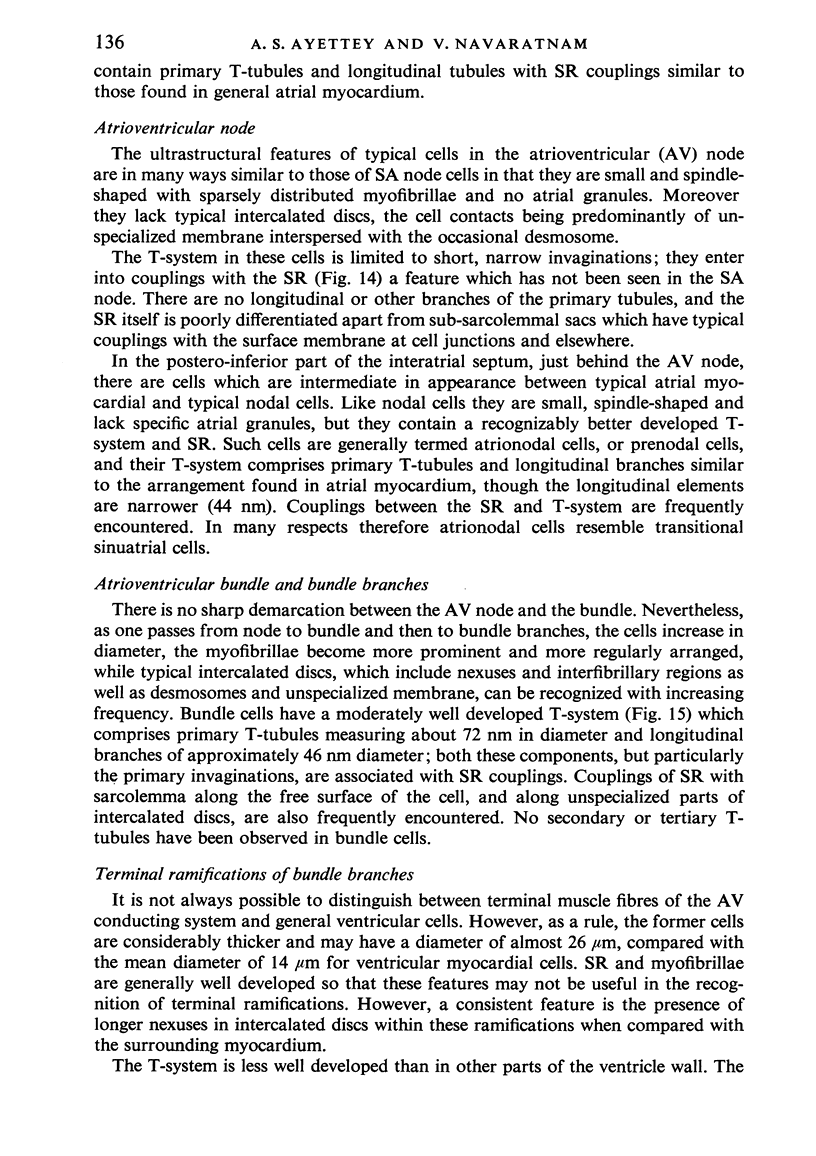
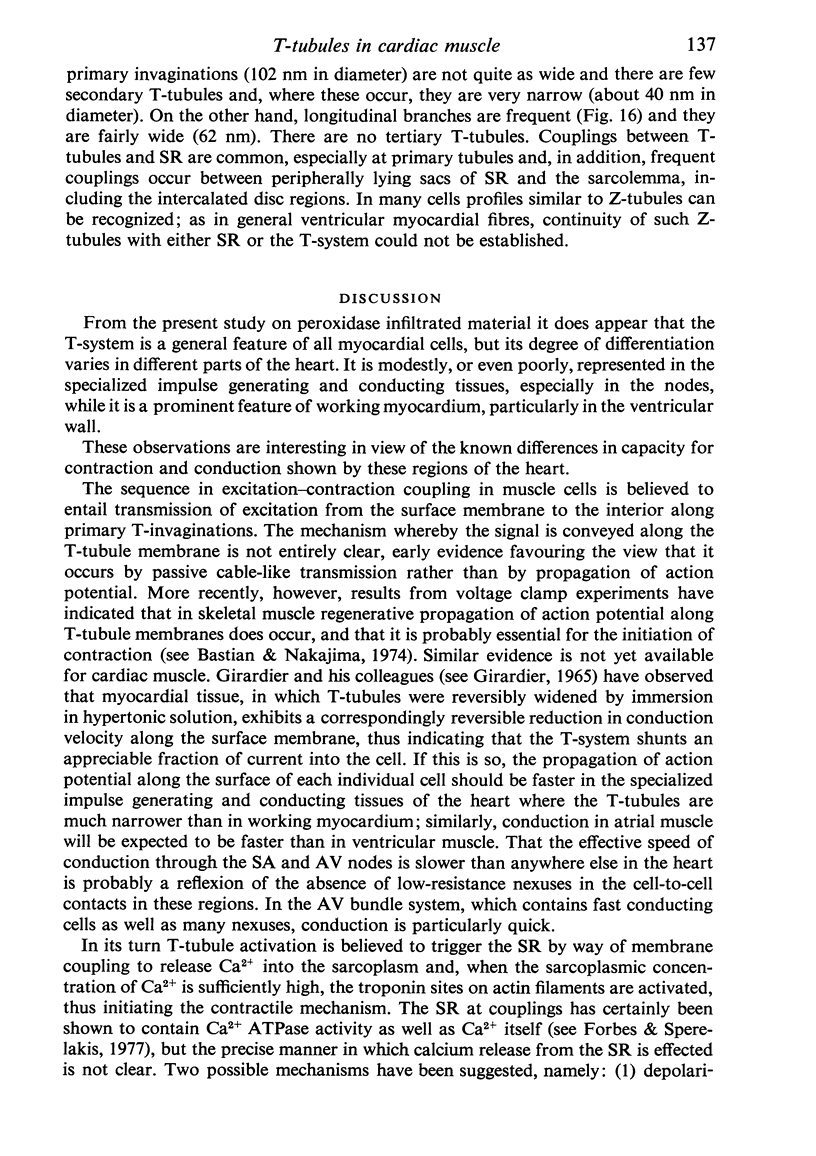
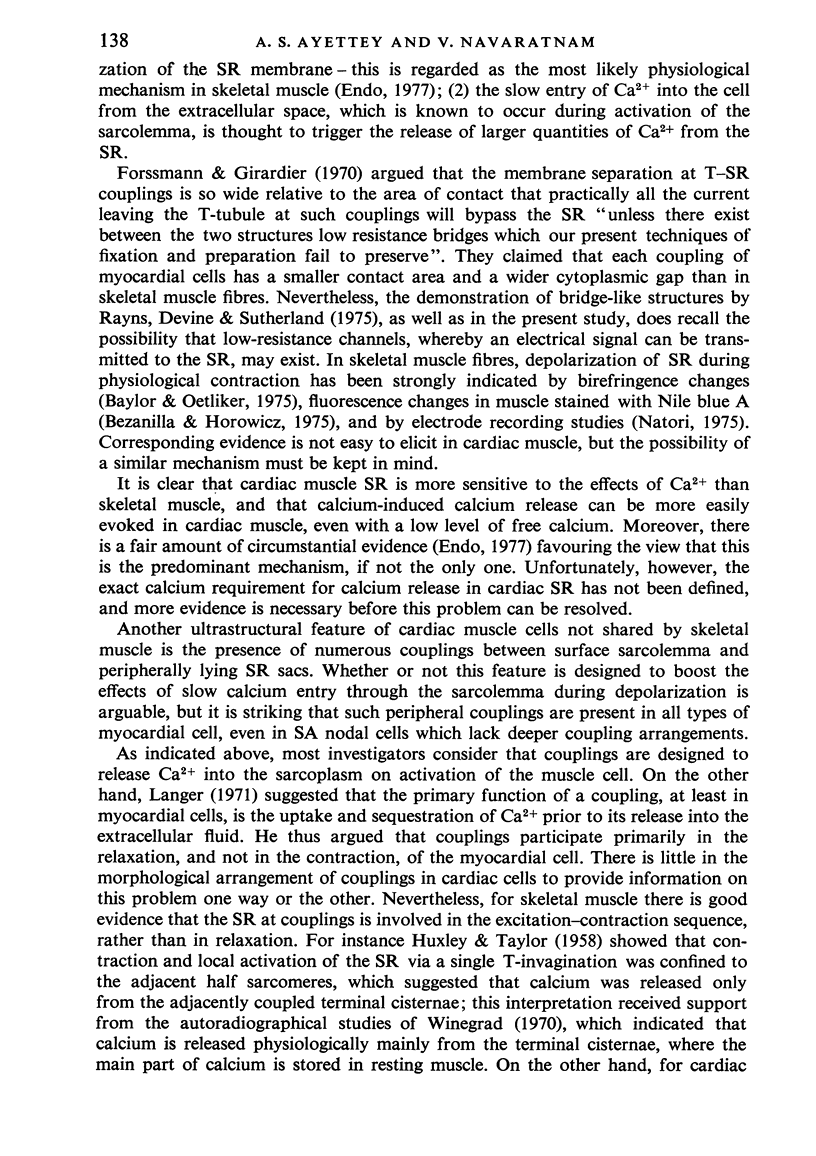
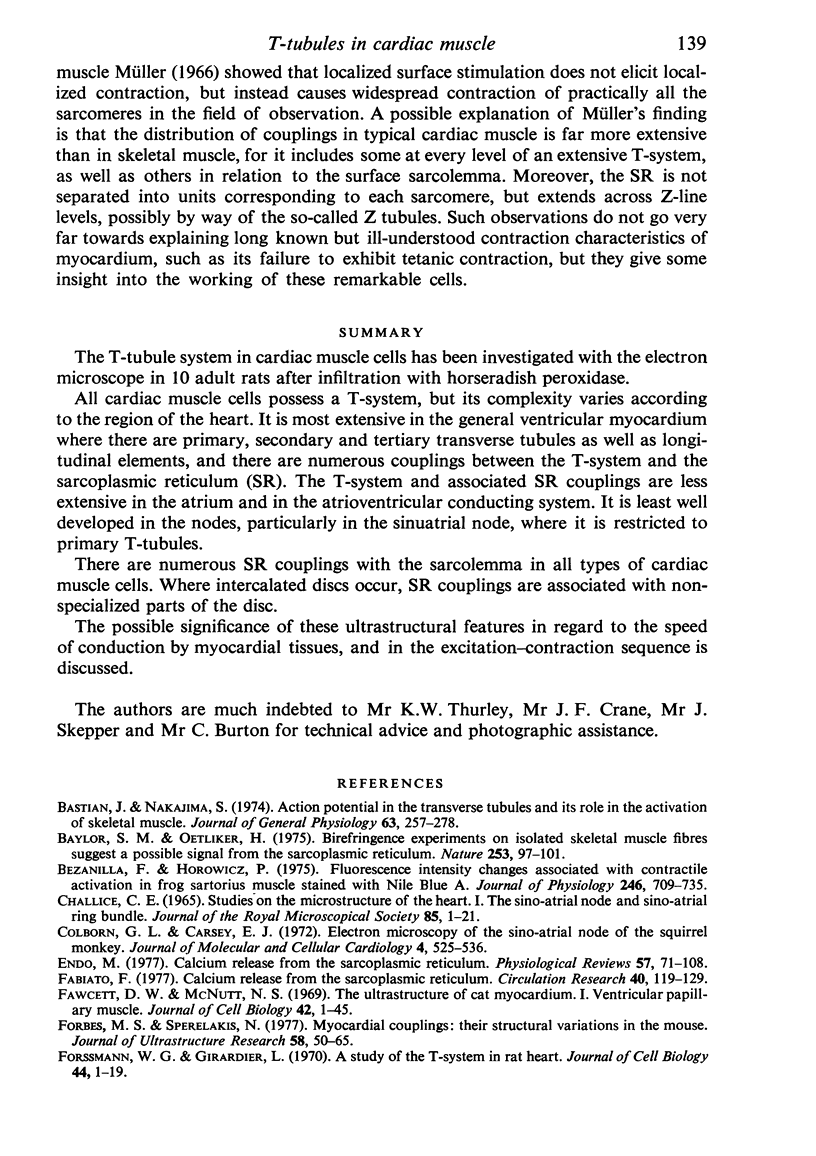
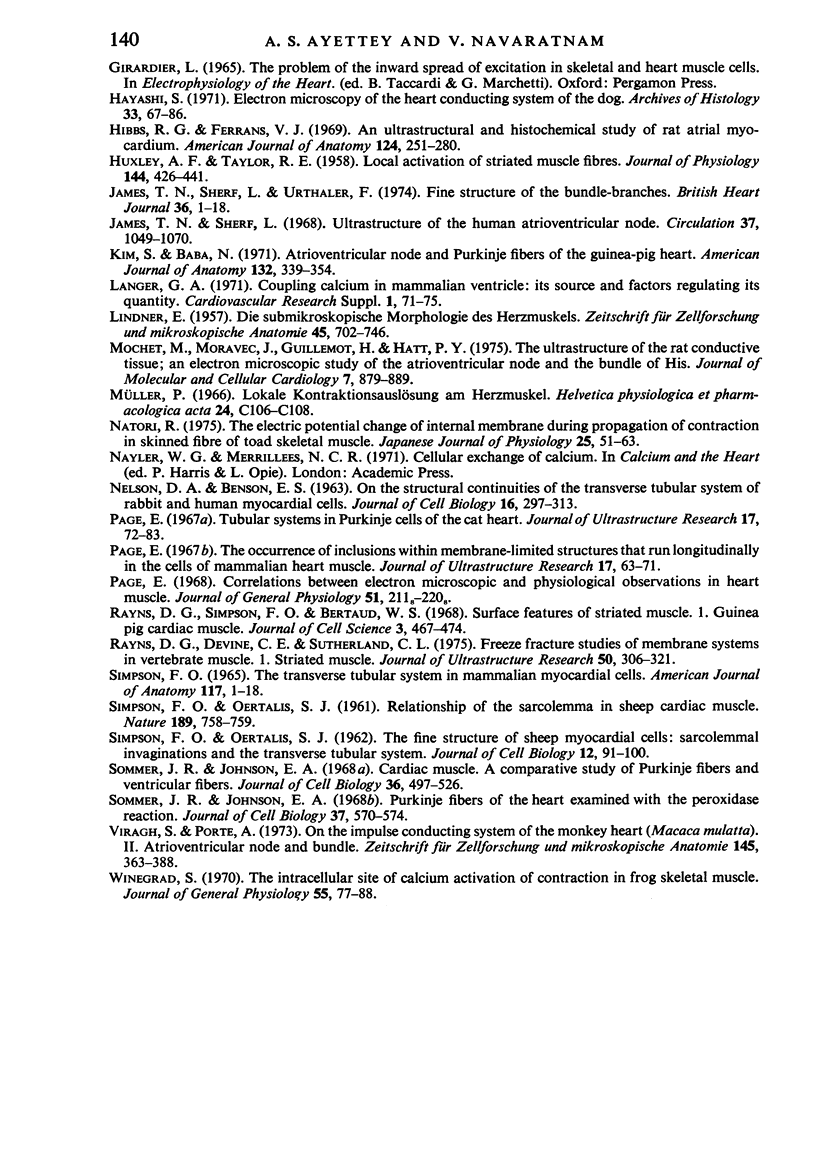
Images in this article
Selected References
These references are in PubMed. This may not be the complete list of references from this article.
- Bastian J., Nakajima S. Action potential in the transverse tubules and its role in the activation of skeletal muscle. J Gen Physiol. 1974 Feb;63(2):257–278. doi: 10.1085/jgp.63.2.257. [DOI] [PMC free article] [PubMed] [Google Scholar]
- Baylor S. M., Oetliker H. Birefringence experiments on isolated skeletal muscle fibres suggest a possible signal from the sarcoplasmic reticulum. Nature. 1975 Jan 10;253(5487):97–101. doi: 10.1038/253097a0. [DOI] [PubMed] [Google Scholar]
- Bezanilla F., Horowicz P. Fluorescence intensity changes associated with contractile activation in frog muscle stained with Nile Blue A. J Physiol. 1975 Apr;246(3):709–735. doi: 10.1113/jphysiol.1975.sp010912. [DOI] [PMC free article] [PubMed] [Google Scholar]
- Colborn G. L., Carsey E., Jr Electron microscopy of the sinoatrial node of the squirrel monkey Saimiri sciureus. J Mol Cell Cardiol. 1972 Oct;4(5):525–536. doi: 10.1016/0022-2828(72)90109-5. [DOI] [PubMed] [Google Scholar]
- Endo M. Calcium release from the sarcoplasmic reticulum. Physiol Rev. 1977 Jan;57(1):71–108. doi: 10.1152/physrev.1977.57.1.71. [DOI] [PubMed] [Google Scholar]
- Fabiato A., Fabiato F. Calcium release from the sarcoplasmic reticulum. Circ Res. 1977 Feb;40(2):119–129. doi: 10.1161/01.res.40.2.119. [DOI] [PubMed] [Google Scholar]
- Fawcett D. W., McNutt N. S. The ultrastructure of the cat myocardium. I. Ventricular papillary muscle. J Cell Biol. 1969 Jul;42(1):1–45. doi: 10.1083/jcb.42.1.1. [DOI] [PMC free article] [PubMed] [Google Scholar]
- Forbes M. S., Sperelakis N. Myocardial couplings: their structural variations in the mouse. J Ultrastruct Res. 1977 Jan;58(1):50–65. doi: 10.1016/s0022-5320(77)80007-5. [DOI] [PubMed] [Google Scholar]
- Forssmann W. G., Girardier L. A study of the T system in rat heart. J Cell Biol. 1970 Jan;44(1):1–19. doi: 10.1083/jcb.44.1.1. [DOI] [PMC free article] [PubMed] [Google Scholar]
- HUXLEY A. F., TAYLOR R. E. Local activation of striated muscle fibres. J Physiol. 1958 Dec 30;144(3):426–441. doi: 10.1113/jphysiol.1958.sp006111. [DOI] [PMC free article] [PubMed] [Google Scholar]
- Hayashi S. Electron microscopy of the heart conduction system of the dog. Arch Histol Jpn. 1971 Mar;33(1):67–86. doi: 10.1679/aohc1950.33.67. [DOI] [PubMed] [Google Scholar]
- Hibbs R. G., Ferrans V. J. An ultrastructural and histochemical study of rat atrial myocardium. Am J Anat. 1969 Mar;124(3):251–270. doi: 10.1002/aja.1001240302. [DOI] [PubMed] [Google Scholar]
- James T. N., Sherf L. Ultrastructure of the human atrioventricular node. Circulation. 1968 Jun;37(6):1049–1070. doi: 10.1161/01.cir.37.6.1049. [DOI] [PubMed] [Google Scholar]
- James T. N., Sherf L., Urthaler F. Fine structure of the bundle-branches. Br Heart J. 1974 Jan;36(1):1–18. doi: 10.1136/hrt.36.1.1. [DOI] [PMC free article] [PubMed] [Google Scholar]
- Kim S., Baba N. Atrioventricular node and Purkinje fibers of the guinea pig heart. Am J Anat. 1971 Nov;132(3):339–353. doi: 10.1002/aja.1001320305. [DOI] [PubMed] [Google Scholar]
- LINDNER E. Die submikroskopische Morphologie des Herzmuskels. Z Zellforsch Mikrosk Anat. 1957;45(6):702–746. [PubMed] [Google Scholar]
- Langer G. A. Coupling calcium in mammalian ventricle: its source and factors regulating its quantity. Cardiovasc Res. 1971 Jul;Suppl 1:71–75. doi: 10.1093/cvr/5.supp1.71. [DOI] [PubMed] [Google Scholar]
- Mochet M., Moravec J., Guillemot H., Hatt P. Y. The ultrastructure of rat conductive tissue; an electron microscopic study of the atrioventricular node and the bundle of His. J Mol Cell Cardiol. 1975 Dec;7(12):879–889. doi: 10.1016/0022-2828(75)90149-2. [DOI] [PubMed] [Google Scholar]
- Müller P. Lokale Kontraktionsauslösung am Herzmuskel. Helv Physiol Pharmacol Acta. 1966 Nov;68:C106–C108. [PubMed] [Google Scholar]
- NELSON D. A., BENSON E. S. On the structural continuities of the transverse tubular system of rabbit and human myocardial cells. J Cell Biol. 1963 Feb;16:297–313. doi: 10.1083/jcb.16.2.297. [DOI] [PMC free article] [PubMed] [Google Scholar]
- Natori R. The electric potential change of internal membrane during propagation of contraction in skinned fibre of toad skeletal muscle. Jpn J Physiol. 1975;25(1):51–63. doi: 10.2170/jjphysiol.25.51. [DOI] [PubMed] [Google Scholar]
- Page E. The occurrence of inclusions within membrane-limited structures that run longitudinally in the cells of mammalian heart muscle. J Ultrastruct Res. 1967 Jan;17(1):63–71. doi: 10.1016/s0022-5320(67)80020-0. [DOI] [PubMed] [Google Scholar]
- Page E. Tubular systems in Purkinje cells of the cat heart. J Ultrastruct Res. 1967 Jan;17(1):72–83. doi: 10.1016/s0022-5320(67)80021-2. [DOI] [PubMed] [Google Scholar]
- Rayns D. G., Devine C. E., Sutherland C. L. Freeze fracture studies of membrane systems in vertebrate muscle. I. Striated muscle. J Ultrastruct Res. 1975 Mar;50(3):306–321. doi: 10.1016/s0022-5320(75)80063-3. [DOI] [PubMed] [Google Scholar]
- Rayns D. G., Simpson F. O., Bertaud W. S. Surface features of striated muscle. I. Guinea-pig cardiac muscle. J Cell Sci. 1968 Dec;3(4):467–474. doi: 10.1242/jcs.3.4.467. [DOI] [PubMed] [Google Scholar]
- SIMPSON F. O., OERTELIS S. J. The fine structure of sheep myocardial cells; sarcolemmal invaginations and the transverse tubular system. J Cell Biol. 1962 Jan;12:91–100. doi: 10.1083/jcb.12.1.91. [DOI] [PMC free article] [PubMed] [Google Scholar]
- SIMPSON F. O. THE TRANSVERSE TUBULAR SYSTEM IN MAMMALIAN MYOCARDIAL CELLS. Am J Anat. 1965 Jul;117:1–17. doi: 10.1002/aja.1001170102. [DOI] [PubMed] [Google Scholar]
- Sommer J. R., Johnson E. A. Cardiac muscle. A comparative study of Purkinje fibers and ventricular fibers. J Cell Biol. 1968 Mar;36(3):497–526. doi: 10.1083/jcb.36.3.497. [DOI] [PMC free article] [PubMed] [Google Scholar]
- Sommer J. R., Johnson E. A. Purkinje fibers of the heart examined with the peroxidase reaction. J Cell Biol. 1968 May;37(2):570–574. doi: 10.1083/jcb.37.2.570. [DOI] [PMC free article] [PubMed] [Google Scholar]
- Virágh S. Z., Porte A. On the impulse conducting system of the monkey heart (Macaca mulatta). II. The atrio-ventricular node and bundle. Z Zellforsch Mikrosk Anat. 1973 Dec 6;145(3):363–388. doi: 10.1007/BF00307163. [DOI] [PubMed] [Google Scholar]
- Winegrad S. The intracellular site of calcium activaton of contraction in frog skeletal muscle. J Gen Physiol. 1970 Jan;55(1):77–88. doi: 10.1085/jgp.55.1.77. [DOI] [PMC free article] [PubMed] [Google Scholar]




